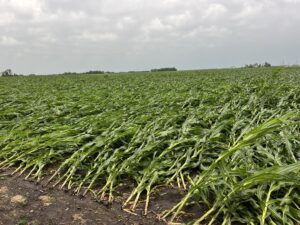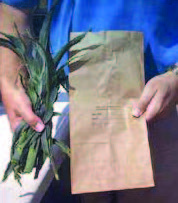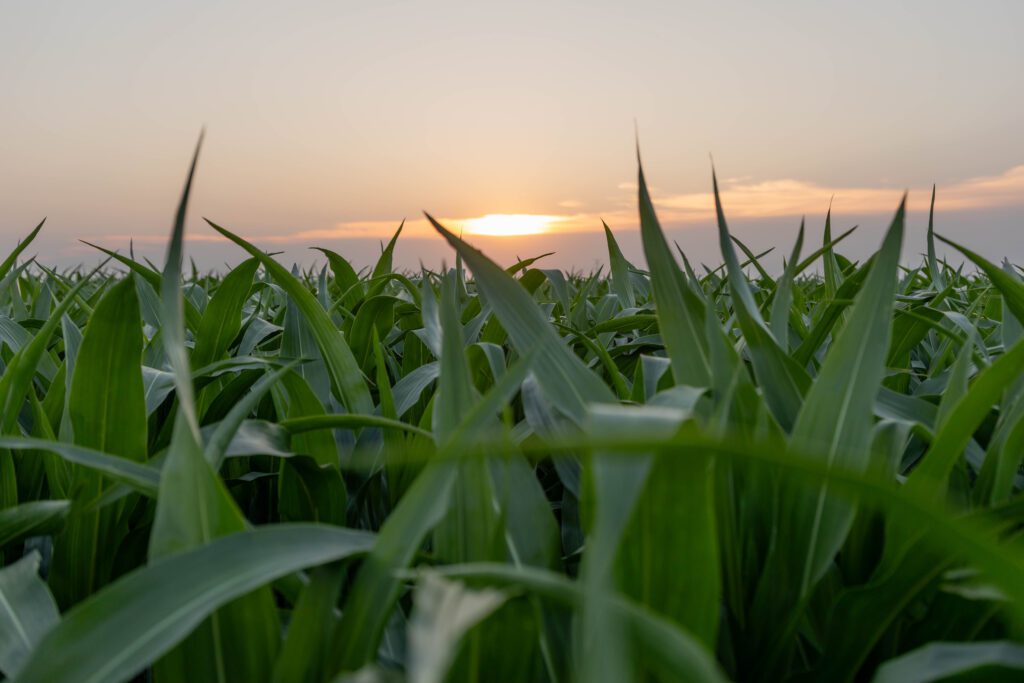By Jerry Hartsock
Cutting Edge Consulting
Contracted by AgVenture, Inc.
Wow, what a blast we have received from the USDA…but with adversity comes opportunity!
The trade in general seems to believe the “real” numbers are closer to 92.2 or so million acres of corn with definitely not a 180 bpa national average. As for soybeans, many believe previous estimates are “close” and surely not actually 4 million less acres. It wouldn’t be too difficult to poll the seed companies on the number of bags sold of corn and soybeans, then figure in an estimate of replant, etc to know close to the actual acreage… hmmm, there’s an idea!
CORN

June 29 storm damage in Illinois, courtesy of @ilcorn on Twitter.
The status of corn is an interesting one even after most have caught some rain. The wind and/or hail issues that ran through several states left corn beat up and laid down. Across Missouri, Iowa, and Illinois, it is tasseling or will be within the next week or two. Corn is very short with shorter than normal internodes. Plants this year are closer to 6’ to 8’ tall, when they normally in many cases would be 10’ to 12’ tall. Rows around (determined at V5) and kernels long (determined V10-V12) have pretty much been set and were set during stressful times for much of the Corn Belt. This is why we stressed getting some early fungicide on in some key spots. Pre-emergent herbicides did not provide much residual activity and rows may only canopy 80-90+%. This may allow weeds to continue germinating and results in a hotter canopy than if the canopy was fully canopied. Recent rains have helped corn progression as it looks like tassels are in general synched with silk growth.
 We stress that taking tissue samples is even more relevant this year due to the fact that nitrogen solutions applied after planting may not have been moved into the soil and thus taken up by the roots. Be mindful of the time of day and/or the environment you are sampling in, because that can affect the results you get back from the lab. Potassium (K) deficiency is EVERYWHERE and obviously was compounded by very cold nights early on and several weeks of dryness (little to no rainfall). Early tissue testing has confirmed that the potassium deficiency symptoms we are seeing coincide with low levels in pretty much every sample we have collected. Root development has been stunted this year and is especially an issue where planting time conditions were not ideal.
We stress that taking tissue samples is even more relevant this year due to the fact that nitrogen solutions applied after planting may not have been moved into the soil and thus taken up by the roots. Be mindful of the time of day and/or the environment you are sampling in, because that can affect the results you get back from the lab. Potassium (K) deficiency is EVERYWHERE and obviously was compounded by very cold nights early on and several weeks of dryness (little to no rainfall). Early tissue testing has confirmed that the potassium deficiency symptoms we are seeing coincide with low levels in pretty much every sample we have collected. Root development has been stunted this year and is especially an issue where planting time conditions were not ideal.
Center pivot fields are looking tremendous. Those who have pivots need to be ready to apply nitrogen, sulfur, and possibly boron through an injector system one or two times. Consider pre-tassel and again around brown silks as your two application targets. Spoon-feeding nitrogen and sulfur multiple times is a more efficient feeding process, and more timely as the crop needs those nutrients.
Never in my 40 growing seasons have I seen drought conditions on the front side of the growing season. The 1988, 2005, and 2012 droughts were all different and extremely dry pre-tassel through grain fill. It is my estimation that several nights with temperatures in the upper 20’s following early planting and then drought conditions for many people for the following 4-7 weeks took the top end off yield potential. I also believe the AgVenture corn products are in a position to excel better than other germplasms because of their ability to take full advantage of the second half of the growing season by taking better advantage of flexing through kernel depth and test weight. Having enough nitrogen late, playing the fungicide game to alleviate stress, and having a longer grain fill period plays right into our hands. Better seed quality and seed treatments helped set this success up dramatically from the beginning compared to the competition.
SOYBEANS
 Soybeans on the other hand have the ability to pause and then rebound for really good yields this season. My suggestion is to stay the course with all the “extras” we ask of you on soybeans, like the fungicide + insecticide + nutrition (potassium and sulfur) application that will maximize yields at R3 in soybeans. Pre-emergent herbicides in soybeans seemed to perform much better than the corn programs this year. Post applications of glyphosate or glufosinate plus Enlist® herbicides have fields clean and ready to canopy. Do NOT let Japanese Beetles alarm you into spraying too early. Their injury and feeding symptoms are usually cosmetic and not across entire fields. Our suggestion is to wait and treat them with the R3 application. It is my prediction that the very low populations in soybeans will be at a disadvantage this year due to the lack of early canopy, or soybeans that were planted into significant cover crop residue (rye) are also behind on growth due to a shortage of moisture from the rye.
Soybeans on the other hand have the ability to pause and then rebound for really good yields this season. My suggestion is to stay the course with all the “extras” we ask of you on soybeans, like the fungicide + insecticide + nutrition (potassium and sulfur) application that will maximize yields at R3 in soybeans. Pre-emergent herbicides in soybeans seemed to perform much better than the corn programs this year. Post applications of glyphosate or glufosinate plus Enlist® herbicides have fields clean and ready to canopy. Do NOT let Japanese Beetles alarm you into spraying too early. Their injury and feeding symptoms are usually cosmetic and not across entire fields. Our suggestion is to wait and treat them with the R3 application. It is my prediction that the very low populations in soybeans will be at a disadvantage this year due to the lack of early canopy, or soybeans that were planted into significant cover crop residue (rye) are also behind on growth due to a shortage of moisture from the rye.
It is not time to give up on this crop, it’s time to get a plan together and push yields forward.
